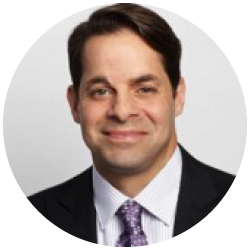Is the Fed Fighting the Last War?
It’s often said that “generals are always preparing to fight the last war.”
In other words, people in charge often spend so much time fixated on how they could have prevented past problems that they fail to prepare for the future.
The most famous example is France’s Maginot Line, which was built in the 1930s to win another war of attrition like World War I. But the nearly 1,000-mile line of defensive fortifications was largely useless against Germany’s blitzkrieg attack in 1939.
What’s true for the military is also true for the Federal Reserve.
In the 1940s, ’50s and ’60s, central bankers were concerned about avoiding the mistakes that led to the Great Depression – namely monetary policy that was too tight. As a result, the Fed let inflationary pressures run “too hot” in the 1970s.
In the decades after that, central bankers were focused on preventing runaway inflation. In 2002, then-Fed board member Ben Bernanke declared “the inflation dragon” had been “caged, if not entirely tamed.”
But Fed officials like Bernanke were blind to the rising threat of deflation.
“I believe that the chance of significant deflation in the United States in the foreseeable future is extremely small,” Bernanke said in the same 2002 speech.
“Under a paper-money system, a determined government can always generate higher spending and hence positive inflation.”
Needless to say, Bernanke’s confidence was misplaced. He spent almost his entire tenure as Fed chairman – from 2006 to 2014 – struggling to fight the deflationary spiral that began after the housing bubble burst.
The Fed Continues to Fixate on the Past
Central bank struggles to generate “positive inflation” continue to the present day. For the past decade, inflation and economic growth have consistently proven weaker than the Fed’s expectations.
And this is a global phenomenon. With little success, policymakers in Europe and Japan have tried to fight deflation with many rounds of quantitative easing and negative interest rates.
The U.S. Fed has avoided negative rates – and more importantly, we may be at a critical turning point in monetary policy history.
On December 11, Fed Chairman Jay Powell raised the bar on what it will take for the Fed to raise rates again.
“In order to move rates up, I would want to see inflation that’s persistent and that’s significant – a significant move up in inflation that’s also persistent before raising rates to address inflation concerns,” Powell said.
Remember, Powell said this with the unemployment rate at a 50-year low and the Dow Jones Industrial Average at an all-time high. Such a statement against that kind of backdrop would’ve been unthinkable for any of his predecessors.
If history is going to repeat, the next generation of central bankers will be hyperfocused on avoiding deflation. They will allow inflation to run hotter than Bernanke, Janet Yellen or Alan Greenspan would’ve dreamed possible.
There’s a certain poetry to this “regime change” in Fed thinking occurring just after the passing of Paul Volcker, who served as Fed chair from 1979 to 1987.
Volcker’s tight monetary policies and tough personality are widely credited for defeating the inflation scourge of the 1970s and ’80s.
Poetry aside, the implications for investors are profound. A “reflation” cycle means continued gains for stocks, but there will be a change in leadership.
First, looser Fed policies will bring about weakness in the dollar. Not the “end of the world” kind that permabears call for, but the kind that benefits international stocks.
How to Profit From the Cycle
Within the U.S. market, rising inflation will benefit growth-oriented sectors like basic materials, while defensive sectors like utilities and healthcare will fall out of favor.
Now would be a good time to take profits in those sectors – or trim your exposure.
Rising inflation should also be good for the financial sector. Banks profit when they’re able to borrow directly from the Fed at low rates and lend to consumers and businesses at higher levels.
This hasn’t been the case for much of the past decade. A flat yield curve has greatly reduced this profit center for banks.
But here, too, the worm may be turning. The yield curve – the difference in rates between 10-year Treasurys and 3-month T-bills – has rebounded from its late-summer inversion and is positive again.
Notably, the Financial Select Sector SPDR Fund (NYSE: XLF) has outperformed the S&P 500 in the past six months. This is a sign, perhaps, of the market sniffing out a normalization of the yield curve and a rebound in inflation.
The good news is that these trends are just starting to play out.
Meanwhile, the Fed is fighting the last war and looking in the rearview mirror. Investors who stay focused on the road ahead will profit handsomely.
About Aaron Task
Aaron is an expert writer and researcher who formerly served as editor-in-chief at Yahoo Finance, digital editor of Fortune, and executive editor and San Francisco bureau chief of TheStreet. You may have also seen him as a guest on CNBC, CBS This Morning, Fox Business, ABC News and other outlets.
A prolific writer and commentator, Aaron is the former host of Yahoo Finance’s video program The Daily Ticker. He has also hosted podcasts for Fortune (Fortune Unfiltered) and TheStreet (The Real Story). His latest on-air passion project, Seeking Alpha’s highly rated Alpha Trader podcast, features top Wall Street experts dissecting the market’s latest news and previewing significant upcoming events. He also regularly provides analysis for the free e-letter Wealthy Retirement, which we will be republishing here on Investment U.






